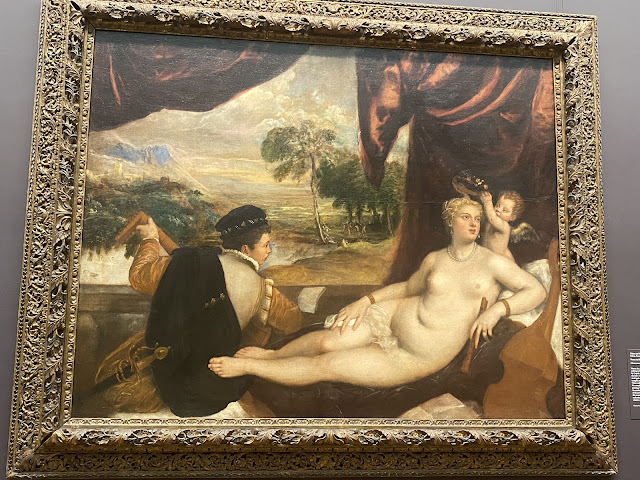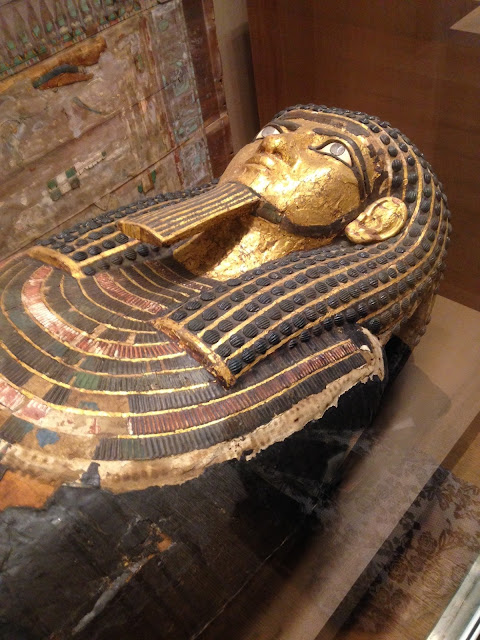Day 385 - Titian and Lotto
November 12, 2024
"Faith and Love in Venice" is the title used to describe the Cinquecento Venetian paintings with religious and secular themes that are on display in gallery 608. The wall sign makes a useful distinction between the "painterly" style of the Venetians and the more "linear" style of the Florentines (although it doesn't use these terms, which I heard a lifetime ago in Fine Arts 13), and notes the influence of Venetian painters on later artists like Rubens, Velasquez, and Manet.
I suspect it's the fleshy female nudes on display that attract the attention of most visitors to the gallery, me included. Foremost among these works is a painting called "Venus and the Lute Player" made by Titian and his workshop between 1565 and 1579. I'm not sure whether its drawing power stems from the fact that it faces me when I enter the gallery, that it's very largee (perhaps 6 1/2 feet wide and 5 1/2 feet high), or that it's familiar to me - probably a combination. A fully clothed youth serenades the reclining goddess, who faces out in full frontal glory except for a strategically placed cloth draping her pubis and some very nice jewelry. The placard describes the painting as unfinished except for the landscape background, painted by Titian himself. This rather surprises me, because the background seems hazy, more suggestive than clearly detailed. But I suppose that's part of what Venetian painting was all about. I wonder who commissioned a painting of this size and where it was originally hung. A bedroom?
I decide to write about a second painting, Lorenzo Lotto's "Venus and Cupid," after the wall sign forces me to look more closely at it. The sign describes the work, measuring abour 5 feet wide and 4 feet high and made in the 1520s, as "startling and playful." When you look beyond the two nude figures that stand out against the red curtain in the background and the artfully rumpled blue cloth on which Venus lies, her left hand touching her breast, you notice that in her right hand she holds up a wreath through which Cupid directs a thin golden arc of urine on her. The first artistic representation of a "golden shower"? The sign says that his act symbolizes fertility, that the painting might have been made to celebrate a marriage, and that Venus' face may be a portrait of the bride. Okay, I confess I am startled by the frank eroticism, not to say pornographic quality, of the image. (I'm reminded of Justice Potter Stewart's statement that he couldn't define pornography but he knew it when he saw it - me too.) But I do find myself wondering whether a toddler could really pee so accurately.





Comments
Post a Comment